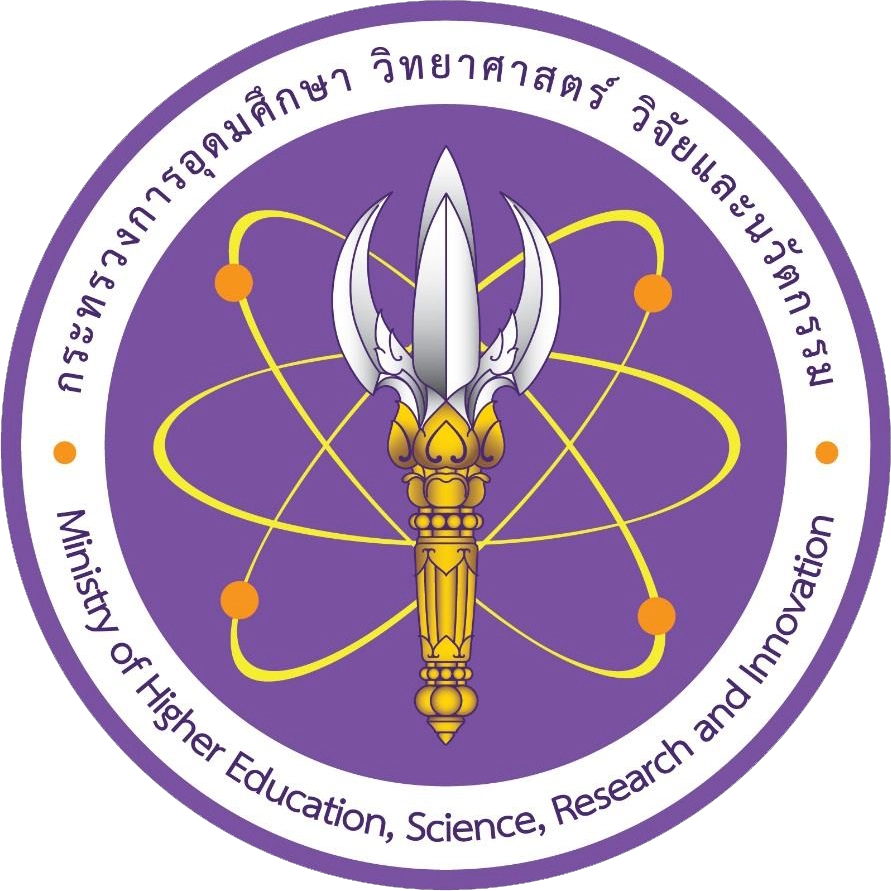ชื่อโครงการ
การพัฒนานวัตกรรมและยกระดับนิเวศการเรียนรู้ดิจิทัลเพื่อพัฒนาสมรรถนะวิชาชีพและคุณภาพการเรียนรู้ในพื้นที่นวัตกรรมการศึกษา จังหวัดสงขลาคำสำคัญ
นิเวศการเรียนรู้ดิจิทัล,สมรรถนะวิชาชีพ,คุณภาพการเรียนรู้,พื้นที่นวัตกรรมการการศึกษาบทคัดย่อ
การวิจัยเรื่อง “การพัฒนานวัตกรรมและยกระดับนิเวศการเรียนรู้ดิจิทัลเพื่อพัฒนาสมรรถนะวิชาชีพและคุณภาพการเรียนรู้ในพื้นที่นวัตกรรมการศึกษา จังหวัดสงขลา” มีวัตถุประสงค์เพื่อ 1) สร้างกระบวนการมีส่วนร่วมโดยใช้พลังจตุรภาคีเครือข่ายในพื้นที่นวัตกรรมการศึกษาจังหวัดสงขลา และ 2) พัฒนานวัตกรรมและยกระดับนิเวศการเรียนรู้ดิจิทัลเพื่อพัฒนาสมรรถนะวิชาชีพและคุณภาพการเรียนรู้ในพื้นที่นวัตกรรมการศึกษา จังหวัดสงขลา ได้ออกแบบวิธีการดำเนินการวิจัยที่สัมพันธ์กันระหว่างชุดโครงการวิจัยหลักและโครงการวิจัยย่อยและแบ่งการดำเนินการวิจัยออกเป็น 3 ระยะ คือ ระยะที่ 1 การศึกษาสถานการณ์ การสร้างกระบวนการการมีส่วนร่วมในการส่งเสริมการพัฒนาสมรรถนะวิชาชีพและคุณภาพการเรียนรู้ในพื้นที่นวัตกรรมการศึกษา ระยะที่ 2 การวิจัยปฏิบัติการพัฒนานวัตกรรมและยกระดับนิเวศการเรียนรู้ดิจิทัลเพื่อพัฒนาสมรรถนะวิชาชีพและคุณภาพการเรียนรู้ในพื้นที่นวัตกรรมการศึกษา จังหวัดสงขลา และระยะที่ 3 การนำเสนอกระบวนการมีส่วนร่วมโดยใช้พลังจตุรภาคีเครือข่ายในการสร้างกลไกความร่วมมือและการบริหารจัดการศึกษาเพื่อพัฒนาสมรรถนะวิชาชีพ ดำเนินการศึกษาวิจัยโดยใช้เทคนิค การวิจัยเชิงคุณภาพ (Qualitative) และวิจัยเชิงปริมาณ (Quantitative) ในเก็บรวบข้อมูลและวิเคราะห์ข้อมูลจากผู้ให้ข้อมูลจากเครือข่ายความร่วมมือจตุรภาคี ซึ่งประกอบด้วย 1) ตัวแทนจากภาคมหาวิทยาลัย 2) ตัวแทนจากภาคการศึกษา 3) ตัวแทนจากภาคเอกชน และ 4) ตัวแทนจากภาคประชาชน ครูและนักเรียนของโรงเรียนกลุ่มเป้าหมาย นำข้อมูลมาวิเคราะห์ข้อมูลเชิงคุณภาพ (Qualitative Data) และวิเคราะห์เนื้อหา (Content Analysis) ผลการวิจัยพบว่า 1) แนวทางการสร้างกลไกความร่วมมือและการบริหารจัดการศึกษาเพื่อพัฒนาสมรรถนะวิชาชีพ ประกอบด้วยแนวทางความร่วมมือหลัก 2 แนวทาง ได้แก่ (1) สร้างการรับรู้และความเข้าใจ (2) การบริหารจัดการศึกษาเพื่อพัฒนาสมรรถนะวิชาชีพ โดยรูปแบบกลไกความร่วมมือ ประกอบด้วย 4 องค์ประกอบ ได้แก่ องค์ประกอบที่ 1 องค์คณะบุคคลเครือข่ายความร่วมมือ องค์ประกอบที่ 2 ขอบข่ายหน้าที่เครือข่ายความร่วมมือ องค์ประกอบที่ 3 แนวทางการบริหารจัดการศึกษาเพื่อพัฒนาสมรรถนะวิชาชีพ และ องค์ประกอบที่ 4 กระบวนการบริหารกลไกความร่วมมือ 2) นวัตกรรมการเรียนรู้ที่พัฒนา ประกอบด้วยหลักสูตรฐานสมรรถนะรายวิชา การจัดการเรียนรู้และการวัดผลสัมฤทธิ์โดยใช้แพลตฟอร์มทางการศึกษาด้วยกระบวนการสอนแบบ STEAM ที่บูรณาการด้วยการสอนแบบ Project Based Learning และดิจิทัลแพลตฟอร์มทางการศึกษา ส่งผลให้นักเรียนมีคุณลักษณะพื้นฐานของการประกอบอาชีพและสมรรถนะตามที่กำหนด มีผลสัมฤทธิ์ทางการเรียนหลังเรียนสูงกว่าก่อนเรียนอย่างมีนัยสำคัญทางสถิติที่ระดับ .05 ทุกรายวิชา ซึ่งเป็นการยกระดับนิเวศการเรียนรู้ดิจิทัลเพื่อพัฒนาสมรรถนะวิชาชีพของนักเรียน 3) กลไกขับเคลื่อนการมีส่วนร่วมโดยใช้พลังจตุรภาคีเครือข่ายในการบริหารจัดการศึกษาเพื่อพัฒนาสมรรถนะวิชาชีพ ประกอบด้วย 3 องค์ประกอบ คือ องค์ประกอบที่ 1 องค์ประกอบของกลไกความร่วมมือ ได้แก่ กลไกทำงาน กลไกขับเคลื่อน และกลไกประสาน องค์ประกอบที่ 2 กระบวนการขับเคลื่อน ได้แก่ บทบาทหน้าที่ของจตุรภาคี ความเป็นอิสระในการจัดการเรียนรู้ของโรงเรียน กระบวนการเสริมสร้างสมรรถนะครู และกระบวนการพัฒนาทักษะอาชีพนักเรียน และองค์ประกอบที่ 3 ข้อเสนอต่อการขับเคลื่อนการมีส่วนร่วมโดยใช้พลังจตุรภาคีเครือข่ายในการบริหารจัดการศึกษาเพื่อพัฒนา ประกอบด้วย (1) คณะกรรมการนโยบาย (2) คณะกรรมการขับเคลื่อนพื้นที่นวัตกรรมการศึกษา (3) หน่วยงานต้นสังกัด (4) สถานศึกษา (5) สถาบันผลิตครู/ครูช่าง และ (6) สถานศึกษาอาชีวศึกษา สถานประกอบการ ชุมชน/ผู้ปกครอง
Title
The Innovative Development and Enhancing the Digital Learning Ecosystem to Develop Vocational Competency and Learning Quality in Education Sandbox of Songkhla ProvinceKeywords
Digital Learning Ecosystem,Vocational Competency,Learning Quality,Education SandboxAbstract
The research on “The Innovative Development and Enhancing the Digital Learning Ecosystem to Develop Vocational Competency and Learning Quality in Education Sandbox of Songkhla Province” aims to: 1) Create a participatory process using the power of networked particle physics in education sandbox of Songkhla Province, and 2) Develop innovation and enhance digital learning ecosystems for professional competency development and learning quality in education sandbox of Songkhla Province. The research has designed a research methodology that is interrelated between the main research project and sub-research projects and divided the research into 3 phases: Phase 1: Situation analysis, creating a participatory process to promote professional competency development and learning quality in education sandbox. Phase 2: Practical research on developing innovation and enhancing digital learning ecosystems for professional competency development and learning quality in the education sandbox of Songkhla Province. Phase 3: Presenting a participatory process using the power of networked particle physics to create a mechanism for cooperation and educational management to develop professional competency. The research is conducted using qualitative and quantitative research techniques to collect and analyze data from data providers in the collaborative network, including 1) representatives from universities, 2) representatives from the education sector, 3) representatives from the private sector, and 4) representatives from the community sector, teachers and students from the target school group. Analyze qualitative data and conduct content analysis. The findings of this research were as follows: 1) The guidelines for creating a cooperation mechanism and educational management to develop professional competency include the following main guidelines: (1) create awareness and understanding, (2) manage education to develop professional competency. The cooperation mechanism consists of 4 components: (1) collaborative network individual component, (2) Collaborative network role framework, (3) educational management guidelines for professional competency development, and (4) cooperation mechanism management process. 2) The developed learning innovations include competency-based curriculum, learning management, and performance measurement using the STEAM education platform integrated with Project-Based Learning and digital education platforms. This has resulted in students demonstrating basic occupational characteristics and predefined competencies, with significant post-learning learning outcomes statistically higher than pre-learning outcomes at the .05 level of significance in all subjects. This has elevated the digital learning ecosystem for the development of student professional competencies. 3) The participatory engagement mechanism using the power of networked particle physics in educational management to develop professional competencies comprises 3 components: (1) Collaboration mechanism components including working mechanisms, driving mechanisms, and coordinating mechanisms, (2) Driving processes including the roles of particles, school learning management autonomy, teacher competency enhancement processes, and student career skill development processes, and (3) proposals for driving participatory engagement using the power of networked particle physics in educational management to develop professional competencies, consisting of (1) policy committee, (2) educational innovation area driving committee, (3) affiliated agencies, (4) schools, (5) teacher training institutions, and (6) vocational education institutions, community/parents.


